Dynamic Design’s New Generation Lotus MK II Cables
| Dynamic Design’s New Generation Lotus MK II Cables |
| A New Generation |
|
|
|
January 2010 |
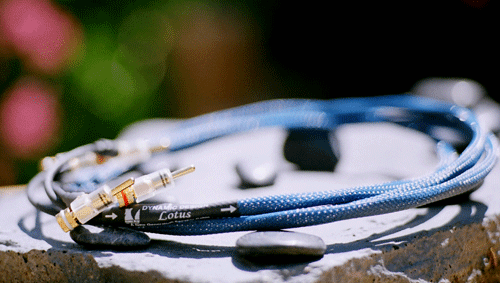
A new generation of reference cables
I was thinking of ways to present this review and felt it would be helpful if I made you aware of the “current generation” of Dynamic Design Lotus cables first. I have been using Dynamic Design cables as my reference ever since I have been writing reviews, in other words, for about six years. The reasons are simple: When I’m reviewing audio gear, the last thing I want to worry about is if the cable is introducing its own sonic character onto what I’m listening to. It’s difficult enough to evaluate a manufacturer’s design without trying to hunt down cable anomalies, if they exist, because I’m not hearing the equipment in a favorable light.
The Dynamic Design cables are neutral, possess wide bandwidth, and let all of the signal that’s passed through them make it easy for me to make an honest assessment of what I’m hearing from different components. The last time I reviewed some of the Dynamic Design offerings, aside from their specialty cables, it was of their fine “Platinum Series” cables. Several years ago, I was having a discussion about vacuum tube preamplifiers with Dynamic Design’s chief designer, Olufemi (Olu) Sonuga, when he casually mentioned that he had come up with a new line of cables he called the “Lotus Series”. He was eager to hear the cables in someone’s system, other than in his own, so I invited him over to replace the Platinum cables with the Lotus. That turned out to be an eye opening experience.
After Olu brought over the cables and made sure everything was setup properly, the rest of the day was spent getting used to the improvements the cables brought to my system. It has been with these cables that I have been doing the bulk of my reviews over the last couple of years. Well as fate would have it, Olu and I were having another discussion on tube preamps when he shares with me that he has improved upon the Lotus cables. Thus began my introduction to the Dynamic Design New Generation Lotus™ MK II cables.
The New Generation Lotus
As I usually do, when Olu told me he had a new cable to introduce, I made arrangements for him to come to my home and set the cables up and make sure all is working properly. I listen attentively, to his manufacturer spiel on the strengths and merits of the new cables, just in case there’s information there I need to use in my review. Of course, a minute after he’s gone, all that goes out the window and I begin the process of doing my evaluation of the cables.
The first thing I noticed about the NG Lotus, as with the Lotus before it, is that the cable has a slightly smaller diameter than earlier Dynamic Design cables, and it’s more flexible too. Mind you, that was not a problem for me as I learned my lesson regarding giving cables enough room to move after an encounter with a DCCA Audio power cord. Dynamic Design cables have never been close to being that bad, but there were some users who felt the cables were a little too “stiff.” Not so with the Lotus. Also, for the first time since I have known Dynamic Design, the NG Lotus cable jackets are a nice medium blue color. As with all Dynamic Design cables, the look and feel are top notch. Olu is fastidious about the fit-n-finish of all of his cables and takes it personally if one of his cables or connectors fails in the field. I haven’t had any difficulties using the Dynamic Design cables and haven’t heard from anyone who has. I know that the NG Lotus cables use Furutech connectors on their interconnects, speaker cables and power cords and that Olu tries a lot of different connectors, not just from Furutech, but from different manufacturers.
In his own words
Okay. Now here is where I have to do my balancing act as a reviewer. Having done my share of cable reviews, there is only so much a writer can share with a reader in terms of what goes into the cable manufacturing process, skin effect, soldering techniques, returns, copper wire, silver wire, gold wire, combinations of the three, and all of that, because there is only so much you can reveal about cables. At the same time, not all manufacturers want us reviewers revealing too much about their manufacturing techniques because they like to hold their cards close to their vest. In that regard, Olu would be a grand master at playing cards. So I asked him to divulge only what he was comfortable with regarding New Generation Lotus MK II cables.
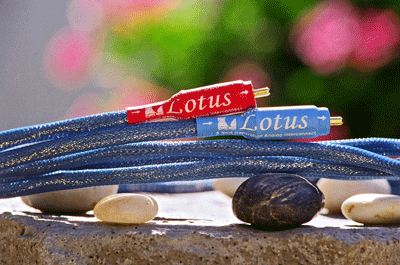
“The New Generation Lotus MK II interconnect is a low capacitance design that uses carefully chosen high quality parts. It is a coherent, low noise, and wide bandwidth design that delivers the true essence of a signal.
The New Generation Lotus MK II speaker cable is built using several unique and innovative materials and design philosophies. The implementation of these unique design philosophies and materials result in a cable with exceptional performance.
The New Generation Lotus MK II power cord represents the state-of-the-art in its design and performance. It features UMLS™, our advanced shielding technology that provides unparalleled protection from both internal and external interference. It also features our HPBM™ conductors, which are designed to deliver all the available current to your components, safely and quietly. It is constructed using very high performance parts that allow it to transmit current with minimal loss in the form of heat and distortion.”
For digital component applications there is also the New Generation Lotus Spirit AC powercord.
The sound of the New Generation Lotus cables
Once the serious listening began, the NG Lotus cables delivered in a big way. The Platinum cables were, and still are, very good, and a step up from a lot of cables currently available. The original version of the Lotus cables set a high standard for which I judged some of the very best cables I had heard and had access to. But the NG Lotus surpassed the original Lotus in terms of neutrality and an uncanny ability to more aptly “see into” the music, due to the darker background that information comes to life from. I felt that the original Lotus was a step up from the Platinum Series as far as speed, openness and detail goes, but missed a little of that “life-giving” warmth that makes musical presentations sound more natural and real than mechanical. The NG Lotus brings back that slight bit of warmth that seemed to be missing from the original Lotus and kept it’s ability to convey the attack, speed, detail and tonality.
The Dynamic Design cables have always been stalwarts when it comes to upper frequency extension, ambiance and air. The NG Lotus maintains this attribute but has an uncanny ability to allow you to hear more information and detail in this region than what I received in the prior version of the Lotus cable. In the midrange, the NG Lotus continues Dynamic Design’s trademark neutrality being neither warm nor overly detailed, but rather, passes the music along as it was recorded on the media that you’re listening to. It’s just a fact of life that some of our treasured recording can sound bright, or aggressive, dark, or startlingly lifelike. Whatever the sonic character of the recording, the NG Lotus will not change it for better or for worse, but will deliver it pristinely. The bass performance of the NG Lotus is very good as well and held nothing back in terms of the equipment’s ability to delve into the lower registers and reproduce bass with power, impact, authority and the ability to move air without sounding thick or diffuse.
Tonally, the NG Lotus does an excellent job of allowing the listener to hear the tonal colors of the instruments. Brass instruments have the requisite “bite” without sounding bright or aggressively etched. The NG Lotus does a good job with the soundstage possessing images with good focus and dimensionality.
When I evaluate cables, the most important thing I listen for is tonality. This is especially true for stringed instruments (e.g. guitars, upright bass, piano) and the tonal differentiation of brass instruments. There are other things I listen for as well, but tonality first. The NG Lotus does an excellent job of conveying instrumental tonal colors.
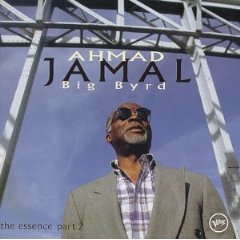 A good example of what I’m talking about would be Ahmad Jamal’s album, Big Byrd – The Essence Part 2 [BirdOlogy 533 477-2]. This disc has an almost hypnotic quality to it. I was drawn into the performances of Ahmad Jamal on the piano, and the wonderful Donald Byrd on trumpet on the title track of this disc. Add to this legendary pairing Manolo Badrena’s percussive expertise and you get a since of the NG Lotus’ ability to render lifelike transient response and rich tonal colors.
A good example of what I’m talking about would be Ahmad Jamal’s album, Big Byrd – The Essence Part 2 [BirdOlogy 533 477-2]. This disc has an almost hypnotic quality to it. I was drawn into the performances of Ahmad Jamal on the piano, and the wonderful Donald Byrd on trumpet on the title track of this disc. Add to this legendary pairing Manolo Badrena’s percussive expertise and you get a since of the NG Lotus’ ability to render lifelike transient response and rich tonal colors.
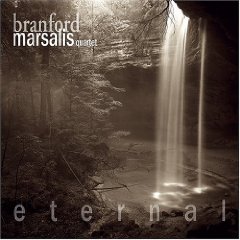 One of my favorite albums is the Branford Marsalis Quartet CD, Eternal [Marsalis Music]. This is one of those rich, but rather somber sounding discs that causes one to sit back and reflect on the cares of the day. This especially rings true for my favorite tracks on this CD,“Dinner for One Please, James”. This is one of those ballads where you feel as though Marsalis invited you to sit down with him, have a scotch, and listen to him talk to you about love lost. Music like this is better felt than heard. The NG Lotus does an impressive job of staying out of the way and allowing the music to communicate the core of its emotion.
One of my favorite albums is the Branford Marsalis Quartet CD, Eternal [Marsalis Music]. This is one of those rich, but rather somber sounding discs that causes one to sit back and reflect on the cares of the day. This especially rings true for my favorite tracks on this CD,“Dinner for One Please, James”. This is one of those ballads where you feel as though Marsalis invited you to sit down with him, have a scotch, and listen to him talk to you about love lost. Music like this is better felt than heard. The NG Lotus does an impressive job of staying out of the way and allowing the music to communicate the core of its emotion.
 A disc, actually a pair of discs since it’s a two-disc set, that I have been spending a lot of time with has been the Brad Mehldau Trio’s Live [Nonesuch]. I love listening to Brad Mehldau because he sounds to me like a virtuoso concert pianist who would rather be playing for a group of friends rather than for a large concert hall filled with patrons. The NG Lotus cables allowed me to see into the music and experience, to a higher degree, the tone of his piano, his phrasing, and his stylish, esoteric arrangements of both classical standards (e.g. “More Than You Know”) and more contemporary selections, like “Black Hole Sun.”
A disc, actually a pair of discs since it’s a two-disc set, that I have been spending a lot of time with has been the Brad Mehldau Trio’s Live [Nonesuch]. I love listening to Brad Mehldau because he sounds to me like a virtuoso concert pianist who would rather be playing for a group of friends rather than for a large concert hall filled with patrons. The NG Lotus cables allowed me to see into the music and experience, to a higher degree, the tone of his piano, his phrasing, and his stylish, esoteric arrangements of both classical standards (e.g. “More Than You Know”) and more contemporary selections, like “Black Hole Sun.”
Summing things up
I have been more than a little impressed with the performance of Dynamic Design’s New Generation Lotus MK II cables. These cables have surpassed all of the tests and comparisons that I have confronted it with. I put a lot of emphasis on having neutral cables in my system, especially since they’re such an integral part of my reviewing process. Cables are so listener-dependent because everyone hears things differently in different systems. Everyone has their own set of likes and dislikes and it’s really difficult to say someone is right or wrong. When I have listening sessions to introduce new cables to friends, I usually invite the ones I know can hear well. We have compared the NG Lotus to cables I have come to have a great deal of respect for and admire. Cables from companies such as Silversmith, Stealth, Argento, and Vitus Audio, amongst others, could easily serve as my reference cables. Note that all of these cables are more expensive than the NG Lotus cables. Within this austere group of cables, the NG Lotus competes favorably against and in some instances, outperforms these cables in one aspect or another.
The NG Lotus does not prefer tubes over solid-state as it does a wonderful job with both. I have used it in systems that cost under $5K as well as in systems that had over $200K worth of equipment in them. Within the line itself, the speaker cables hold their own very well, but the interconnects, especially the balanced cables are stars. A close second would be the interconnects with the single ended connectors. These cables are one of my favorite cables, short of the Hovland phono cable, to use on my analog front end. I used the cables to go from my Cardas pib-box to the phono section of my Klyne preamp. The NG Lotus power cords also did an outstanding job in my system, and in a systematic approach, are really where you should start to make the changes in your system. These power cords have shown to be a quite noticeable improvement over every power cord I have replaced with them, short of the most expensive Argento power cords which are more than five times the cost. One of the more dramatic increases in performance I experienced was rendered by the NG Lotus Spirit power cord once I put it on my CD player. Simply stated, they provide less noise and more music. Taken as a system, as a whole, using all NG Lotus cables and power cords can raise the level of performance of your system to the point that you would think you inserted a new amplifier or preamplifier.
Using the Dynamic Design New Generation Lotus cables throughout your system can elevate every parameter you use to evaluate equipment or enjoy music, and it’s not a subtle improvement either. I unhesitatingly give these cables my highest recommendation. They are well worth seeking out.
![]()
![]()
Specifications: Dynamic Design New Generation Lotus Cables
Interconnects: $900 RCA – $1200 XLR/1 meter pair
Digital Cables: $700 RCA – $850 XLR/1 meter
Speaker Cables: $1100/8 foot pair
Power Cords: $1000/6foot
Manufacturer
www.dynamicdesignav.com
![]()
Don’t forget to bookmark us! (CTRL-SHFT-D)
Stereo Times Masthead
Publisher/Founder
Clement Perry
Editor
Dave Thomas
Senior Editors
Frank Alles, Mike Girardi, Russell Lichter, Terry London, Moreno Mitchell, Paul Szabady, Bill Wells, Mike Wright, and Stephen Yan,
Current Contributors
David Abramson, Tim Barrall, Dave Allison, Ron Cook, Lewis Dardick, John Hoffman, Dan Secula, Don Shaulis, Greg Simmons, Eric Teh, Greg Voth, Richard Willie, Ed Van Winkle, Rob Dockery, Richard Doran, and Daveed Turek
Site Management Clement Perry
Ad Designer: Martin Perry




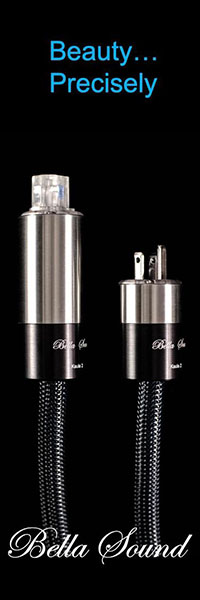
Be the first to comment on: Dynamic Design’s New Generation Lotus MK II Cables